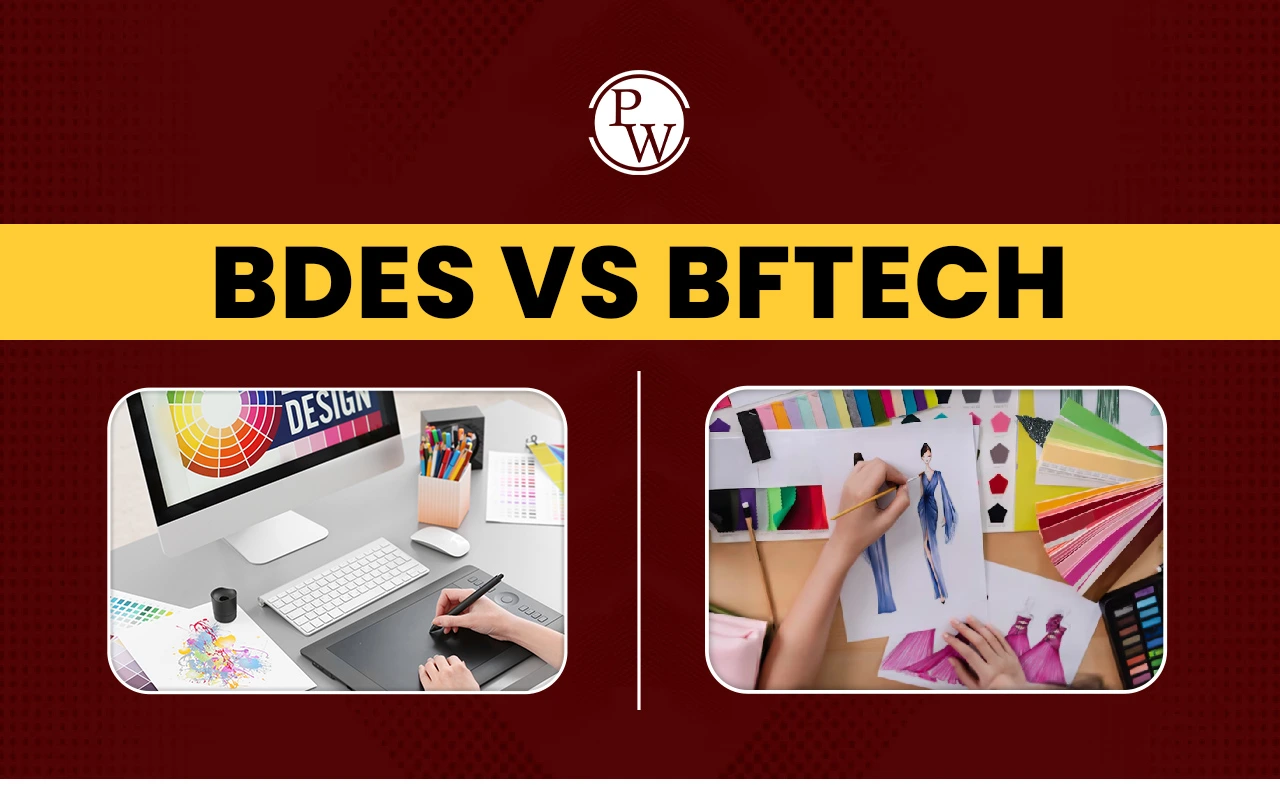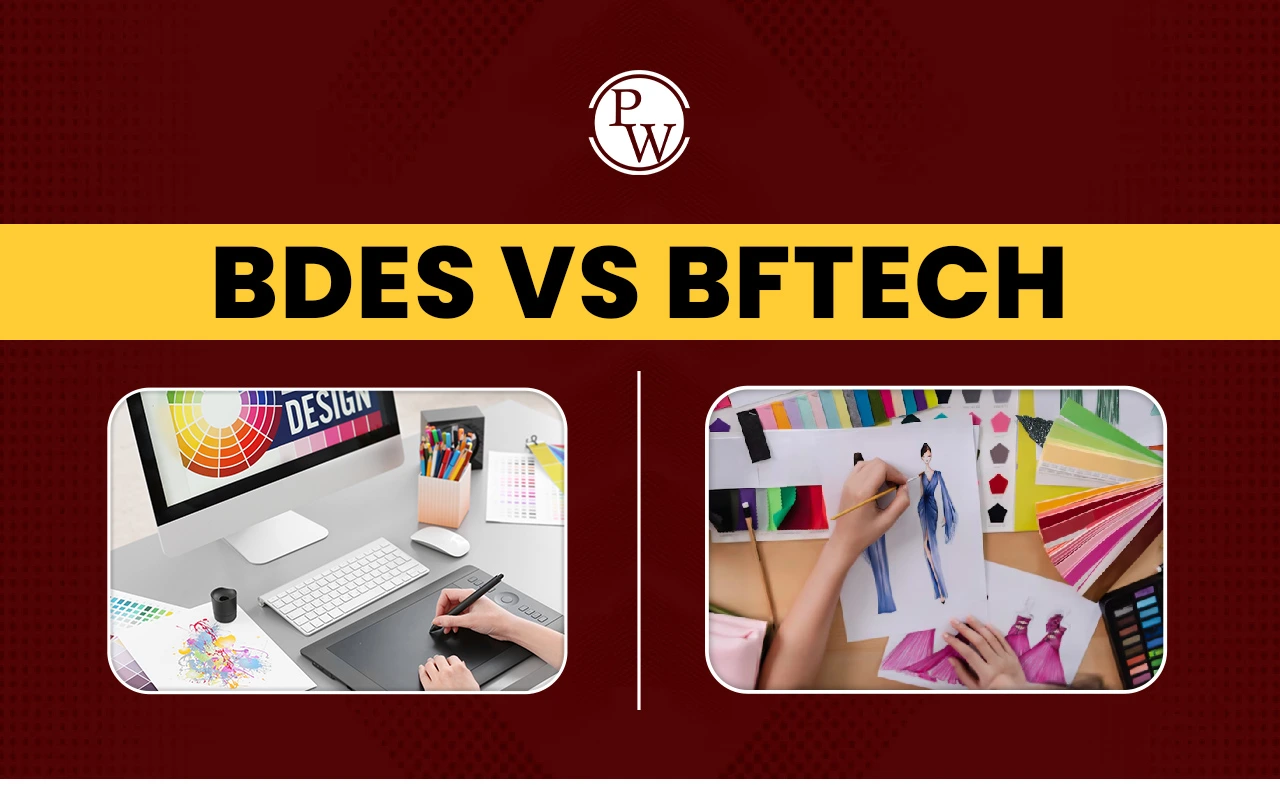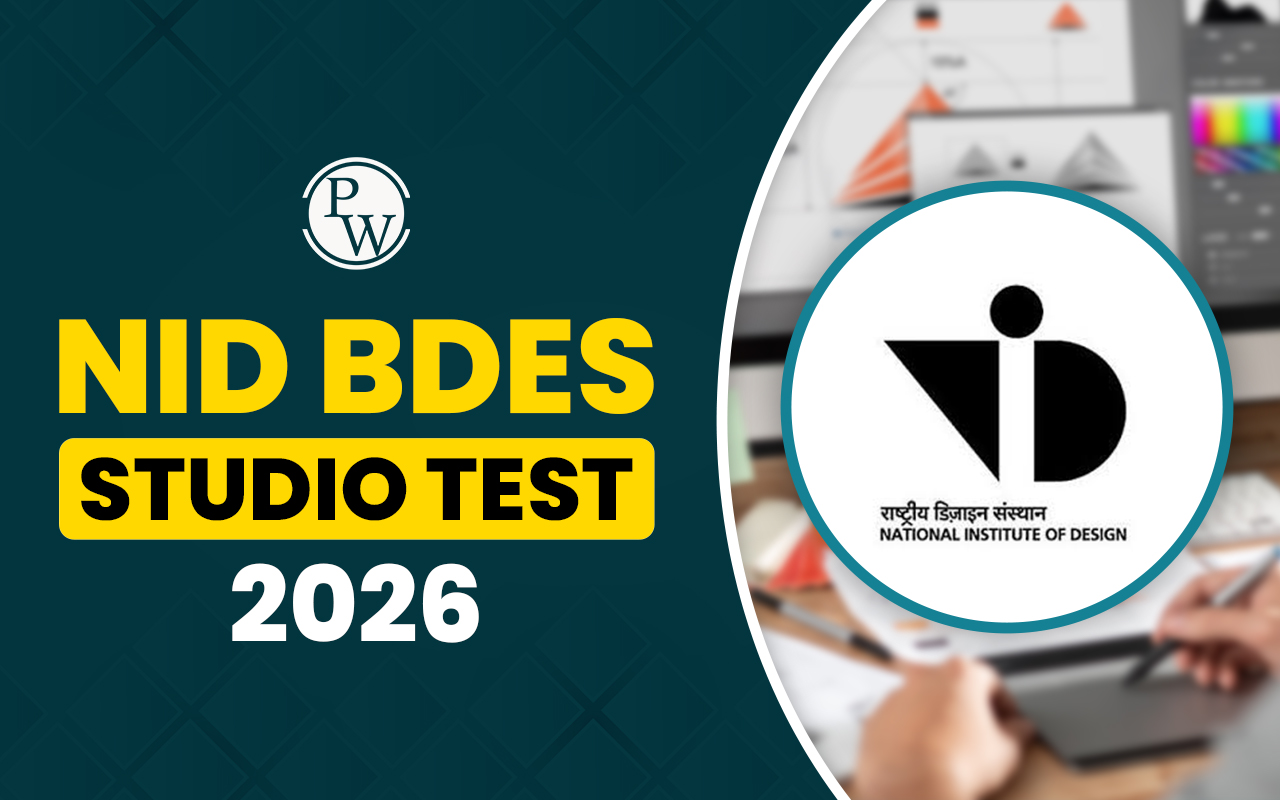

BDes Vs BFTech: Students aspiring to be a designers often wonder which field to choose between BDes and BFTech. Both these fields are distinctive in their course structure, yet follow the same academic stream. While BDes is a general design course without any specialization or expertise, BFTech is a specialized degree in fashion technology. Aspirants willing to pursue a career in the design industry must know the distinction between BDes and BFTech and accordingly make their choice.
What is BDes?
BDes stands for Bachelor of Design. It is a 4-year undergraduate program with specializations in various streams such as graphic design, fashion design, industrial design, interior design, and more. Many renowned design institutes including NIFTs offer BDes courses. After completing the BDes course, graduates get recruited by top design firms and industries, and work in media, fashion, technology, and architecture fields.
What is BFTech?
Bachelor of Fashion Technology (BFTech) is a specialized undergraduate design course that teaches about fashion technology. It upskills aspirants on the technical aspects of apparel manufacturing, textile science, and production management. BFTech graduates find jobs in production planning, quality control, and supply chain management within the fashion and apparel sectors.
BDes Vs BFTech Highlights
BDes and BFTech are two most prominent choices for candidates wanting to pursue design as a career. While BDes teaches conceptual design in fashion, interior, furniture, etc, BFTech educates candidates how to develop, design, manage, and sell fashion items. The following table highlights the key differences between BDes Vs BFTech.
BDes Vs BFTech Eligibility Criteria
Candidates juggling between BDes and BFTech must first check out the eligibility criteria and accordingly select their preferences. Both BDes and BFTech courses require a merit score in relevant entrance exams such as NIFT, NID, etc., with a class 12th completion certificate. Here's the breakdown of the BDes Vs BFTech eligibility criteria.
BDes Vs BFTech Admission Procedure
Choosing between BDes and BFTech involves understanding the distinct admission procedures for each program. Both courses are popular undergraduate options in the design and fashion sectors, but they follow different selection processes and eligibility requirements. Knowing these differences is crucial for students to prepare effectively and apply to their preferred program.
BDes Vs BFTech Scope & Career Opportunities
Pursuing either BDes Vs BFTech course, offers promising yet distinctive career opportunities in the design and fashion sectors. BDes focuses on creativity and artistic expression in design disciplines majorly and BFTech educates candidates on the technical, production, and managerial aspects of the fashion industry. Both courses open diverse career prospects with scope and industry focus differ significantly. Some of the career options for both BDes and BFTech courses are listed below.
Career Options After BDes
- Corporate Houses
- Shopping Malls
- Fashion Marketing
- Design Production Management
- Fashion Accessory Design
- Fashion Show Management
Career Options After BFTech
- Apparel Merchandising
- Textile Mills
- Garment Manufacturing
- Fashion Houses
- Leather Goods Manufacturers
BDes Vs BFTech Top Recruiters
Many renowned companies hire BDes and BFTech graduates with a good salary structure. Based on the skills and specializations, companies recruit candidates. For BFTech graduates, fashion houses, apparel manufacturers, and technology-driven fashion brands are the prime focus, while for BDes graduates, creative firms across sectors like fashion, product, and graphic design are in demand. Some of the prominent recruiters for BDes and BFTech graduates are as follows.
Recruiters for BDes
- Indira Gandhi National Centre for the Arts
- Indian Council For Cultural
- Godrej Designs
- Tanishq
- Tata Motors
Recruiters for BFTech
- Monte Carlo
- Future Group
- Decathlon
- Bata India
- Blackberrys
BDes Vs BFTech Salary
The salary structure for BDes and BFTech graduates varies based on their specialization and industry roles. The average salary of BDes graduates ranges between INR 3 to 6 lakhs per annum initially, with potential growth depending on experience and design domain. BFTech graduates start with salaries around INR 4 to 6 lakhs per annum. The average salary based on posts for both BDes and BFTech graduates is given below.
BDes Salary Structure
The following table mentions the salary structure across various posts for BDes graduates.
BFTech Salary Structure
Here’s the average salary package across various designations for BFTech graduates.
BDes Vs BFTech Top Colleges
Many design colleges including NIFTs, NIDs, etc, offer both BDes as well as BFTech courses across various streams. Candidates have to opt for colleges as per their preference to pursue either one of the courses. Some of the institutes listed below are relevant to the BDes Vs BFTech debate.
Colleges Offering BDes Courses
- NID Ahmedabad
- Industrial Design Centre, Bombay
- NIFT Mumbai
- NIFT Delhi
- Pearl Academy, Mumbai
- NID Gandhinagar
- SID Pune
Colleges Offering BFTech Courses
- NIFT Mumbai
- NIFT Delhi
- NIFT Chennai
- NIFT Kolkata
- Amity School of Fashion Technology, Kolkata
- C.E.T. College of Management Science and Technology, Kerala
BDes Vs BFTech Syllabus
The syllabus for BDes and BFTech varies depending on the course. BDes covers design fundamentals, creative processes, and specialization options like product, communication, or fashion design. BFTech includes textile science, garment manufacturing, quality control, and industrial engineering. The syllabi for both BDes and BFTech are mentioned below.
Which is Better Between BDes Vs BFTech?
Deciding between BDes and BFTech depends upon candidates’ interests, career goals, and creative skill sets. Candidates have to first think about their interests as an upcoming designer and then decide which course to pursue. While BDes is good for aspirants passionate about creative design, visual aesthetics, and conceptualizing new products or garments, BFTech is ideal for students who are interested in the technical, operational, and managerial aspects of the fashion industry.
Both BDes and BFTech have strong industry exposure, but the choice aligns with your interests, whether you choose creative work or technical problem-solving opportunities.
BDes Vs BFTech FAQs
What is the main difference between BDes and BFTech?
BDes focuses on creative design disciplines like fashion, graphic, product, or interior design, while BFTech emphasizes the technical and managerial aspects of fashion and apparel production.
What are the eligibility criteria for BDes and BFTech?
Both BDes and BFTech courses require completion of 10+2 from a recognized board, with BFTech sometimes preferring candidates with a background in science subjects like physics, chemistry, and maths.
What specializations are offered in BDes?
BDes offers diverse specializations such as fashion design, leather design, accessory design, textile design, knitwear design, fashion communication, graphic design, interior design, and more.
What career opportunities are available after BDes?
BDes graduates can work as fashion designers, graphic designers, product designers, interior designers, animators, multimedia designers, and more in various industries.
What career options does BFTech offer?
BFTech graduates find roles as fashion technologists, production managers, quality control specialists, merchandisers, and supply chain managers in the fashion and textile industry.













